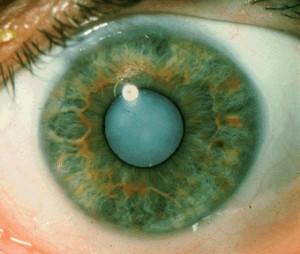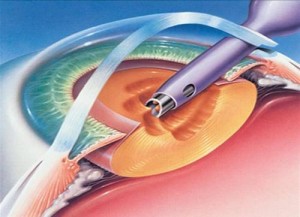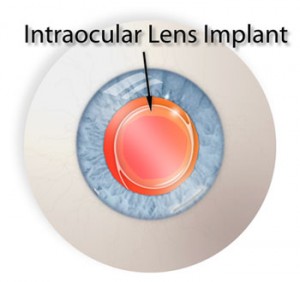The term “cataract” refers to a cloudy lens within the eye. This clouding is caused by proteins in the eye breaking down as we get older. As a result, the amount of light penetrating the lens and reaching the retina at a proper angle is reduced. While you may not notice any cataract symptoms or your vision might even improve slightly, it is important to remember that your eyesight will deteriorate soon.
The best defense is to have regular eye exams and if diagnosed with a cataract, to have your lenses replaced quickly.
What are the symptoms of cataracts?
 The most common symptoms of a cataract are:
The most common symptoms of a cataract are:
- Cloudy or blurry vision often described as ‘milky’ or ‘hazy’
- Colors seem faded
- Glare or a halo around lights
- Poor night vision
- Double vision or multiple images in one eye
- Frequent prescription changes in your eyeglasses or contact lenses
Are there particular risk factors for cataracts?
Cataracts will eventually affect everyone. The typical onset happens between 60 and 70 years of age. Earlier or later onsets, however, are not uncommon. The following factors can influence the speed and severity of cataracts:
- Injury to the eye
- Certain diseases like diabetes
- Smoking or alchohol abuse
- Prolonged, direct exposure to sunlight
Are cataracts reversible?
No. Unfortunately, no pills or medical treatments exist to cure or reverse cataracts. While glasses or contact lenses may help you with reading or driving, your cataracts will get progressively worse with time. For this reason, at Visium Eye Institute we recommend a prompt cataract lens replacement. It is the only option to get back to enjoying your family activities and all the adventures life brings without blurred, cloudy vision holding you back.
How are cataracts treated?

The only effective method to improve your vision is to have the cataract lens removed and replaced with a new, implanted lens. Drs. Shah use modern cataract technology to restore the natural clarity of your vision. In addition, a wide selection of replacement lenses allows us to pick a lens that will also aid with your distance and close-up vision. Using the optimum technology gives the you a great chance to get rid of your astigmatism and return your vision to 20/20.*
Cataract Removal
After making a small incision in your eye, your surgeon will insert an intrument about the size of a pen tip to remove the cataract, using either high-frequency sound waves to gently break up the cloudy lens (phacoemulsification), or pulses of fluid to wash it away (liquefaction).
Lens Insertion
 The cataract-affected natural crystalline lens is replaced with an artificial intraocular lens (IOL). IOLs are typically made of a flexible material, allowing your surgeon to fold and insert the IOL through a very small incision. Once inserted, the IOL opens, and its haptics, or “arms,” unfold to keep it inplace.
The cataract-affected natural crystalline lens is replaced with an artificial intraocular lens (IOL). IOLs are typically made of a flexible material, allowing your surgeon to fold and insert the IOL through a very small incision. Once inserted, the IOL opens, and its haptics, or “arms,” unfold to keep it inplace.
Vision Restored
Once the catract is removed, and the IOL is in the proper position, light can once again travel unimpeded to the back of your eye. Recovery after cataract surgery is generally quick and usually occurs within only a few days.
